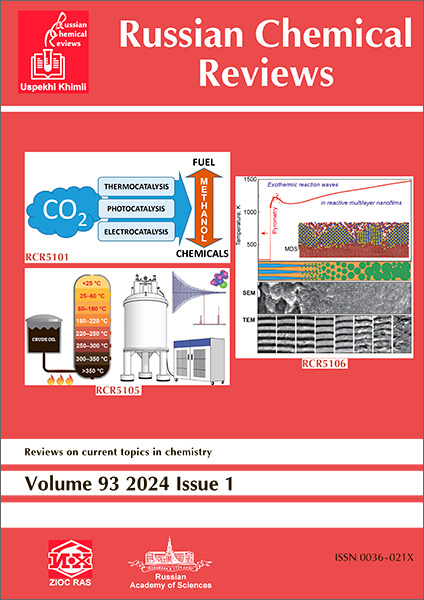氧化还原液流电池在现代电力工业中的作用及主要类型的比较特点
IF 6
2区 化学
Q1 CHEMISTRY, MULTIDISCIPLINARY
引用次数: 21
摘要
近年来,电力工业的关键原理发生了根本性的变化,开发机械能或化学能等不同形式的电能存储装置的研究数量迅速增加。这篇综述给出了这些设备的简要描述。人们的注意力集中在氧化还原液流电池(rfb)上,这是一种很有前途的储能设备,能够在分布式电网中有效运行,以消除“非常规来源”的时变电力生产与电力消耗之间的不平衡。在设计层面,rfb将燃料电池和化学能源的原理与固体电活性材料相结合:在这些设备中,电和化学形式的能量之间的转换发生在氧化还原活性电解质的氧化和还原过程中,这些电解质存储在单独的罐中,并被泵入由半透膜隔开的膜电极组件(MEA)的电极室。这种方法确保了这些设备相对于其他类型的化学能源的一个重要优势,即系统的能量存储容量和功率特性的独立缩放的可能性。本文系统介绍了RFBs的主要类型,并分析了它们的基本优点和缺点,从而确定了RFBs的实际应用前景。参考书目包括149篇参考文献。本文章由计算机程序翻译,如有差异,请以英文原文为准。
Redox flow batteries: role in modern electric power industry and comparative characteristics of the main types
In recent years, the key principles of the electric power industry have radically changed and the number of studies on the development of devices for electrical energy storage in a different form such as mechanical or chemical energy has rapidly increased. This review gives a brief description of these devices. The attention is focused on redox flow batteries (RFBs), a promising type of energy storage devices capable of efficiently operating in distributed power grids, in order to eliminate the imbalance between the time-varying electricity production by ‘unconventional sources’ and electricity consumption. At the design level, RFBs combine the principles of fuel cells and chemical energy sources with solid electroactive materials: transitions between electrical and chemical forms of energy in these devices occur upon oxidation and reduction of redox-active electrolytes, which are stored in separate tanks and pumped into the electrode compartments of the membrane electrode assembly (MEA) separated by a semi-permeable membrane. This approach ensures an important advantage of these devices over other types of chemical energy sources, that is, the possibility of independent scaling of the energy storage capacity and power characteristics of the system. This review provides a systematic description of the main types of RFBs and analysis of their fundamental benefits and drawbacks, which determine the prospects for practical applications of RFBs. The bibliography includes 149 references.
求助全文
通过发布文献求助,成功后即可免费获取论文全文。
去求助
来源期刊

Russian Chemical Reviews
化学-化学综合
CiteScore
13.00
自引率
5.20%
发文量
27
审稿时长
6-12 weeks
期刊介绍:
Russian Chemical Reviews serves as a complete translation of the esteemed monthly review journal Uspekhi Khimii, which has been a prominent figure in Russian scientific journals since its establishment in 1932. It offers comprehensive access to the advancements made by chemists from Russia and other former Soviet Union countries.
Established in 1932, Russian Chemical Reviews is committed to publishing timely and significant review articles encompassing various facets of modern chemistry, including chemical physics, physical chemistry, computational and theoretical chemistry, catalysis, coordination chemistry, analytical chemistry, organic, organometallic, and organoelement chemistry, chemistry of macromolecules, applied chemistry, biochemistry, bio-organic chemistry, biomolecular chemistry, medicinal chemistry, materials chemistry, nanochemistry, nanostructures, and environmental chemistry.
 求助内容:
求助内容: 应助结果提醒方式:
应助结果提醒方式:


